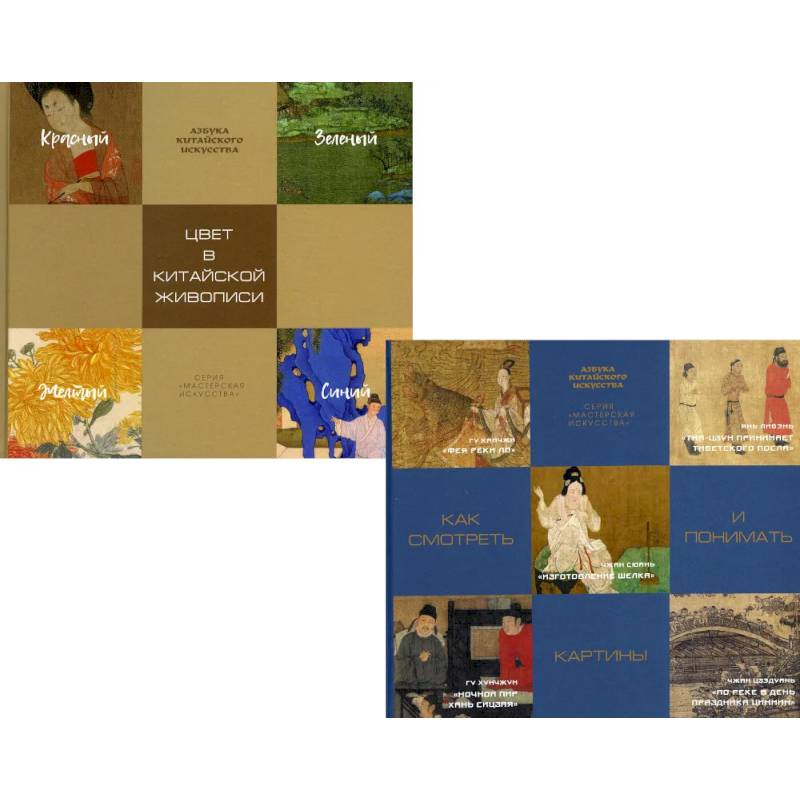Encyclopedia of Chinese Painting (set of 2 books)
Please sign in so that we can notify you about a reply
The “Encyclopedia of Chinese painting” contains books: "How to watch and understand the paintings" in the book tells about the famous works of ancient Chinese painting, explains how to watch and understand the paintings, from the time of creation of which we are separated by more than a thousand years, so their perception is not at all A simple task. The first part is dedicated to one of the most outstanding picturesque scrolls in the history of China called "Fairy of the Lo River". The poem about the love of the poet Tsao Ji (lived at the turn of the II-III centuries) to the beautiful river fairy inspired a myriad of painters. The most famous is the picture of Guychi, created more than 1600 years ago, which has a special mysterious attractiveness. In the Chinese tradition, the prescription of painting is not exhausted by only aesthetic pleasure - it also conveys the events of past eras. The painting "Tay-Szun accepts the Tibetan Ambassador of Yan Libane"s brush is an image of the famous emperor Tai-Szun and the well-known history of the establishment of diplomatic relations between the two countries. The description of this picture and work of Yan Libane and other artists of the Tang era (618-907) is presented in the second part of the book. Among the surviving information about various historical eras, the most colorful are the descriptions of the appearance of elegant beauties of the Tan era. What did the women who lived at that time really look? What outfits and jewelry did they wear? This can be found out in the third part from the description of the famous picturesque work "Making silk" unsurpassed master of image scenes of the court life of Zhang Xuan. The picture of "night feast Han Sitszai", recognized as one of the ten greatest works of Chinese painting, is said in a fourth part. The picture depicts a scene of a cheerful feast organized by Han Sissay, an official of the state of the South Tan (X century) The author of this work of Gu Hunjun (910-986) was considered an outstanding artist who knew how to convey the psychological state and spiritual mood of the characters in the smallest details. "On the river on the day of the holiday of Qingmin" Zhang Jeduan is the famous picturesque canvas, reflecting the colorful and rich life of Bianjin, which was about 900 years ago the largest city in China, the capital of the North Sun empire (960-1127) It can rightfully be called a kind of encyclopedia, which fully reveals to us the city life of Chinese society of that time. About this picture, a detailed story in the fifth part of the book. "Color in Chinese painting" in the book tells about the colors of traditional Chinese painting, the works in which this or that color prevails is considered. In Chinese painting, in addition to the well -known carcass, there are a number of transparent and opaque colors soluble in water. In four parts of the book, illustrations and detailed descriptions of paintings written by ancient masters are selected by color - red, green, yellow, blue. Red - in ancient times, Zhu’s paint was mainly used for painting clothes, some elements of architecture, walls of Buddhist and Taoist monasteries, with the help of this color they transmitted sunrise in the landscape, depicted pink clouds at the dawn and sunset or maple leaves. Green - this color occupies a special place in traditional painting. There is even a separate type of landscape called the "blue-green landscape". The most commonly used green paint is Shilyui, in the landscape, trees and mountains are drawn, depict flowers, leaves and stems, and this paint is used to convey the emerald green color of the peacock feathers. Yellow - yellow paint, which is used in traditional painting, is mainly made of minerals. The yellow color is very bright, gives people a feeling of lightness, joy and fills their hearts with dreams. After the era of Sun, a bright yellow color became an imperial color. Blue - in traditional painting, the blue color is called qing. Shatsin’s paint has found wide application in Buddhist architectural painting, especially a lot of this color can be seen on world -famous frescoes in the ancient Mogao caves in Dunhuan
Cover:
Cover:Hard
Category:
- Category:Arts & Photography
- Category:Reference books
- Category:Drawing & Painting
Publication language:
Publication Language:Russian
Paper:
Paper:Molded
Age restrictions:
Age restrictions:6+
ISBN:
ISBN:978-5-521-16990-0
No reviews found
